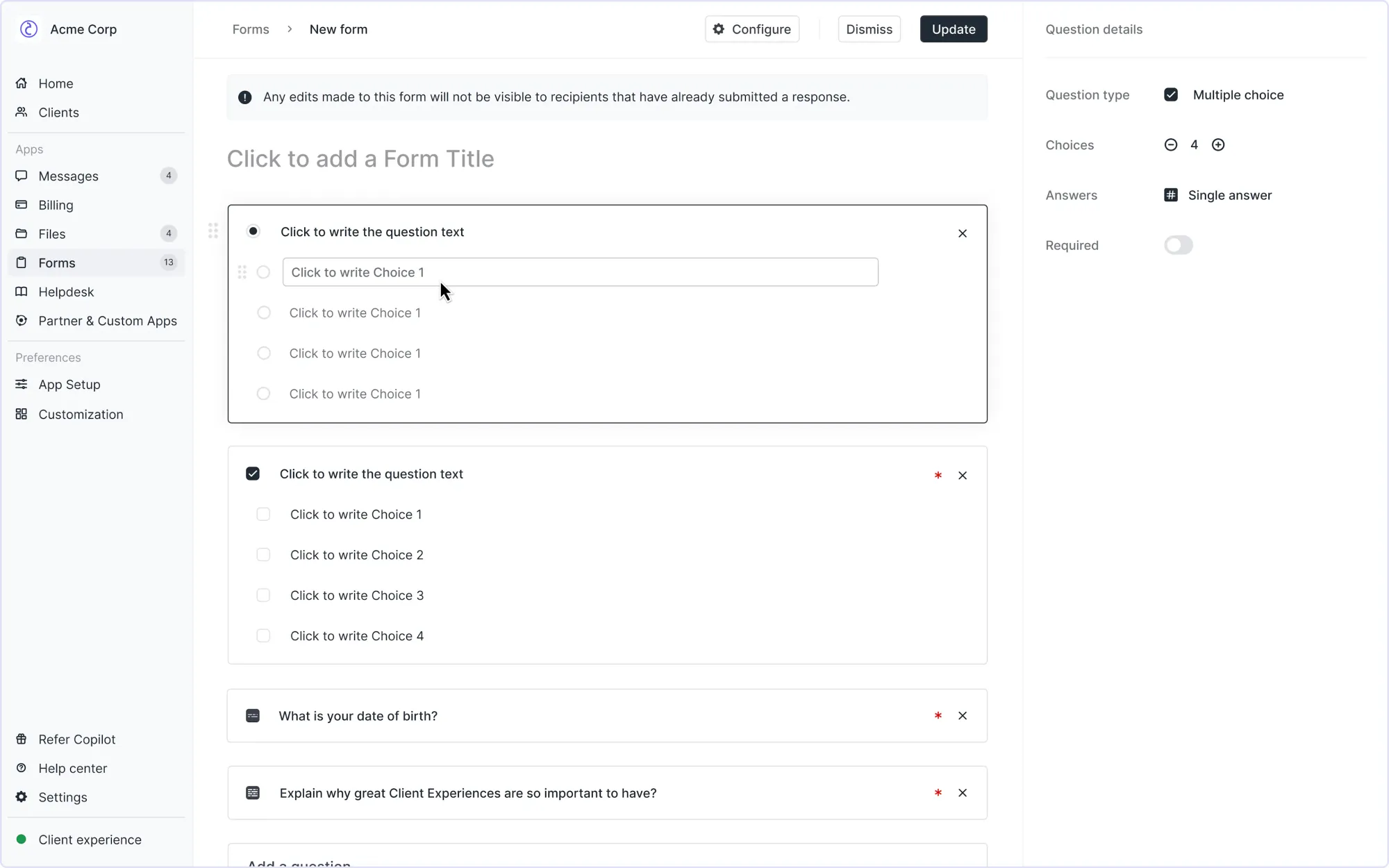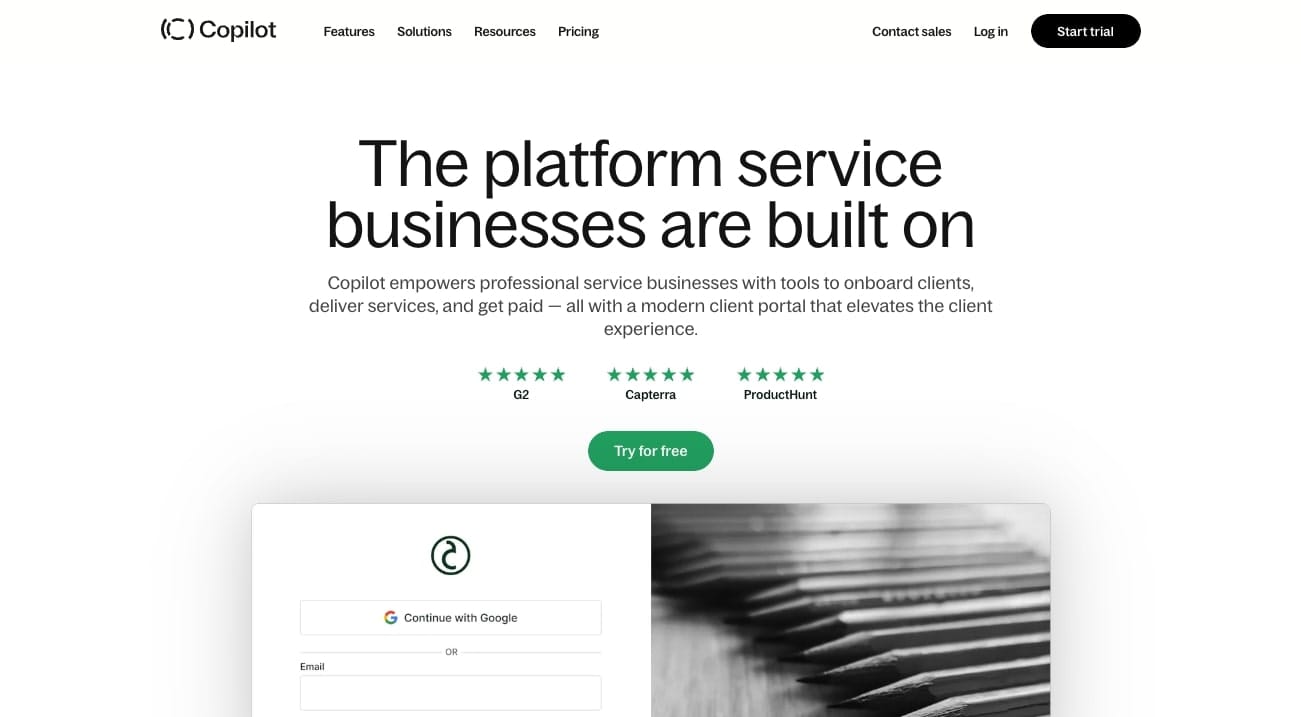
Do you want to know the secret to keep your clients around for a long time?
Build trust with them.
The best way to do this is to provide a great service and nail down your client reporting process.
In this article, I’ll go over why client reporting is so important and I’ll also explain my five-step process to creating effective client reports. By the end of this article, you should have the keys to impressing your clients with not only your professional skills but your soft skills as well.
What is client reporting?
Client reporting refers to the process of giving your clients regular updates and detailed reports on the status, performance, progress, and results of the services you’re providing them.
The goal of client reporting is to show transparency and let your clients know how their relationship with you is going. It not only helps you build trust with your clients, but it also helps you get a pulse on how your services are performing.
How you approach reporting will depend on the services you provide. Some reports require detailed presentations and reports, while others can include a simple dashboard. For example, I run a marketing agency that provides content and SEO services, so most of my reports include an SEO reporting dashboard that I create and my clients can take a look at. Every week, I’ll then explain the dashboard and let them know what’s working, what’s not, and how we should proceed.
Why client reporting is important
Client reporting is important because it builds trust with your clients. And trust is what keeps you in business. Besides the trust factor, it also helps you build accountability to continue doing great work for your clients.
Running a service business has its ups and downs, and you sometimes need a boost to help you stay organized and productive. Many times, this boost comes from knowing you have a deadline coming up (like a client reporting meeting).
Keeping your clients up to date not only keeps you accountable, but it also helps you make adjustments to your service so you can retain your clients for the long run.
Alright, now let’s get into my five steps to perfecting your client reporting process.
5 steps to your client reporting process
Here are my five steps to client reporting:
- Create a client intake questionnaire
- Know key metrics, OKRs, and KPIs
- Create personalized reports
- Educate your clients
- Create a regular cadence of reporting
Alright, let’s go over each step.
1. Create a client intake questionnaire

Okay, you might be asking yourself, “what should I include in a client report?” Unfortunately, I can’t give you a direct answer because this will vary based on the service, industry, and types of clients you serve.
But what I can do is go over what I include for my own reports, and give you a general framework that you can use to fit your business.
One of the first things you want to do is cater your services to the type of client you’re working with. You never want to create a cookie-cutter template for how you approach each client. Trust me, I’ve seen this play out before and the story doesn’t end well.
The best thing you can do to create a foundation for a great client reporting process is to simply ask your client what metrics they’re trying to measure and improve. I know, shocker.
Usually, during the onboarding process, you send a client an intake form with questions about their business. In this onboarding questionnaire, you should have asked about KPIs (key performance indicators) and their goals.
Based on this information in your intake form, you can start to create a report that revolves around the things your client cares about. This is the information you’ll use to get an understanding of what your client really cares about. And when you know what your client’s deep desires are, you can focus your efforts on helping them get what they want.
2. Know their goals, OKRs, and KPIs
Once you collect answers from your client intake form, you want to take everything your client says into consideration. But be careful here.
Your client hired you because you’re the expert. They will have goals they want to achieve, but it’s up to you to help them navigate what’s realistic and what’s not.
Here, you want to take your own learnings from past clients and your client’s goals — and combine them to create a custom plan of action. This is where you’ll work with your client to create clear objectives key results (OKRs) and key performance indicators (KPIs) that align with their goals.
You want to make sure that whatever goals you set are measurable, actionable, and relevant to your client’s business goals. For example, your client may have a goal of getting their website to over 100K visitors per month. Or they might have a goal to increase sign-ups by 20% QoQ (quarter over quarter).
What you’ll notice is that these are outcome-driven goals. And the issue with these goals is that we can’t really control them. They’re good north-stars metrics to have, but they shouldn’t be the primary things you report on. These are more so secondary things to report on.
Your primary benchmarks should be input-driven goals — things you can control. This shows your client the effort you’ve been putting into it. For example, to hit the traffic goal, our input goal will probably be measured around a number of new pages shipped on the website.
We can control the number of content pieces we create, but we can’t control how many people will see them (if that makes sense).
At this point, you should have a solid foundation for a regular reporting process. Knowing what your client cares about, and creating goals with them, will allow you to report on the things you can control (and the things that actually matter).
3. Create personalized reports
Once you know what to report on, it’s time to create your personalized reports. To get the most out of your client reports, you want to leverage tools that help you automate and streamline the process.
Tools for client reporting
Here are a few tools you can use when building out a custom report:
- Looker Studio: This allows you to integrate different data sources like Google Analytics, Search Console, and third-party tools, to create visual dashboards. Looker Studio is free to use and it’s what I use to create my own analytics reports for my clients. They also have report templates that can fit the different services you provide.
- Plus: Plus is a presentation platform that allows you to create beautiful presentations with Google Slides. It was founded by an old coworker I had that I respect a lot, so I know it’s a great product. Many agencies and freelancers use Google’s suite of products so Plus easily makes your existing Google Slides a lot more professional and presentable.
- AgencyAnalytics: This tool allows you to create custom marketing reports. It’s a data visualization tool that lets you create automated client reporting dashboards so your clients can see their campaign performance.
- Tableau: This is an advanced data visualization tool that will most likely require you to get a developer involved. But Tableau is a super powerful tool that allows you to integrate everything from analytics to revenue data. This way, you can make connections to what is moving the needle for your client’s bottom line.
There are a lot of different client reporting tools out there, but these four are a few of my favorites.
From there, you also want to make sure the reports are visually appealing, easy to understand, and highlight the most critical information. If you think your client would benefit from knowing about a certain metric or outcome, include it in your report.
But, don’t just show your clients numbers and graphs. Explain them too. Tell your client the “why” behind the metrics you are tracking and showing.
I bring this up because it was a huge lesson I learned a couple of years ago, that I’ll get into in the next section.
4. Educate your clients
In a previous article, I explained how failing to educate my first big client is how they ended up churning. That article was about learning how to retain clients if you want to check it out.
But one of the points I made in that article was that educating clients is extremely important for building trust and keeping them around for the long term.
And when I say educate I don’t just mean reporting on what’s working and what isn’t. What I mean is that you should tell them what it is you’re tracking, why it matters, and how it’s being measured.
Many (not all) clients don’t care too much about the how of the work you’re providing them. I personally provide content and SEO services and I can’t recall any time a client asked me how I approach creating outlines or writing articles. They don’t care about that. All they care is that the job is being done (the right way).
What they do care about is why you believe what you’re working on is the most important thing. The why is more important to them than the how.
So when I say educate, I mean that during your client reporting meetings, you should explain what certain metrics mean and why they are important for the bigger picture you and your client set in step two of this article.
Education is at the core of effective client communication and it’s at the top of client reporting best practices.
5. Create a regular cadence of reporting
Clients love predictability, and so do us service providers! This is why it’s important to create a regular cadence for reports and meetings. The frequency with which you decide to set your client reports is going to depend on the types of services you provide.
In most cases, a weekly cadence is a solid foundation for reporting on any performance metrics. Generally, it’s best to over-communicate at the beginning of your client relationships to make sure your client is in the loop with what you’re working on.
As time goes by, the frequency may change and you could end up doing async meetings and reports. It all depends on the level of trust your client has in you, the freedom they give you to do your work, and the type of service you provide.
For example, I normally do one monthly report and will occasionally do bi-weekly meetings just to check-in. This is only because the service I provide is stretched across a long time horizon. It also doesn’t make sense to report on things like SEO metrics on a weekly or daily basis as it’s not enough time to truly see what is going on. Some may argue that monthly is also too often for SEO.
The goal is to use your own judgment on what makes sense, communicate that to your client, and also take into account what your client prefers. At the end of the day, you are at service to your client, so it’s best to follow what they want.
Copilot: A great client reporting tool

Client reporting can seem like a daunting task, especially for freelancers and service providers just starting out. If you’re like me and you care deeply about your client experience, all you want is for your clients to be happy.
And when you over-index on your client’s happiness, it can sometimes take a toll on your mental. But, one way I found that helps alleviate this is to create a process where most of my reporting is hands-off.
If you recall in the last section, I mentioned how most of my reporting is on a monthly basis. Some clients I have I don’t even have meetings with for months at a time and everything is pretty hands-off. But in those cases, my clients are actually reviewing reports on a daily or weekly basis.
The difference is that much of my client reporting is automated. I use tools (like the ones we mentioned in step three) and I integrate them with my favorite client portal software — Copilot.
Copilot is a client portal tool that allows you to bring your entire service business under one roof. It’s like a mission control center for my business, and I wouldn’t be writing this article if I didn’t love the platform.
The great thing about Copilot (and what makes it different than other client portal tools) is that it’s an extensible platform. Meaning, you can integrate it with third-party apps that your client may already be using. From project management tools to reporting software, all of it can be integrated straight into a Copilot client portal.
This way, my clients simply log into their portal on their own time and view analytics dashboards and any reports that I have uploaded — without having to even message me.
I know signing up for a new tool can be too much for some agency owners, so I recommend that you simply play around with the demo portal and see the power for yourself. If you like it, be sure to sign up for a free trial and onboard one of your clients with the tool.
Hopefully, by now, you know how to create great client reports and you’re one step closer to building the agency of your dreams!
Share this post
Sign up for our newsletter
Subscribe to our newsletter to receive emails about important announcements, product updates, and guides relevant to your industry.
